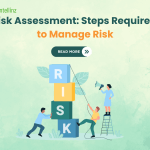Why Consider Fraud Prevention
With rapid advancements in technology, businesses of all sizes remain under grave threat of different types of financial crimes, including frauds and scams. On average, organizations lose around 5% of their annual revenue every year to fraud, according to the 2020 Report to the Nations published by the ACFE. Victim firms not only suffer a revenue hit but they may also face reputation damage, non-compliance fines, and legal costs. For small businesses, it takes only one serious scam to go bankrupt.
If you want to protect your business from all types of financial crimes, follow this fraud prevention guide.
Fraud Prevention Tips
Conduct Continuous Fraud Monitoring
Frequent and ongoing monitoring is the key to effective fraud detection. Experienced fraud prevention professionals like fraud managers and fraud analysts typically focus on two key areas to protect customers from identity theft and ensure security. These include:
Continuous Transaction Monitoring
This approach relies on analytical resources to detect risk. It keeps an eye on all sensitive and non-sensitive, monetary and non-monetary user actions, thereby tracking each step from login attempts to carrying out transactions.
Some of the online activities this anti-money laundering system should particularly monitor include registering a new device, making changes to personal user information in their profile, and adding a payee or beneficiary. The data collected through these attempts and their outcome, either success or failure, should be analyzed to build historical profile for each customer.
This historical profile for individual users should enable the system to identify behaviors that are inconsistent with the typical banking behavior of an account’s real owner. These anomalies should immediately alert your business that a fraud might be imminent.
Continuous Session Monitoring
This approach specifically applies to the banking session only. The aim of this approach is to identify potential risks by analyzing all activities across all devices and channels. As a financial institution, your role is to leverage proper authentication when appropriate.
For instance, if a customer authenticated their account with a mobile device but a subsequent banking session began on a PC. Similarly, if a user authenticated from one country but there’s a payment attempt from another country in a subsequent banking session, your fraud prevention team should immediately get alert. In either case, consider forcing authentication on the user with the device that was initially used for authentication.
In Conclusion
According to Refinitiv, financial crime is multi-national, multi-faceted, and often invisible, which makes it hard to measure, identify, and combat. But this doesn’t mean you can’t do anything about it.
With proper plans and protocols in place, you can significantly diminish the chances of scams and theft and minimize any associated losses. It is pertinent to note that preventing fraud happens to be less expensive than trying to recover from financial and reputational damage. For robust anti-money laundering solutions, get in touch with Intellinz today!






